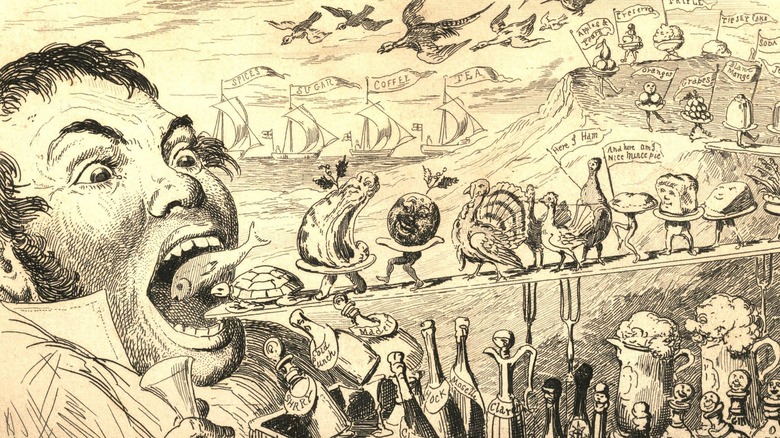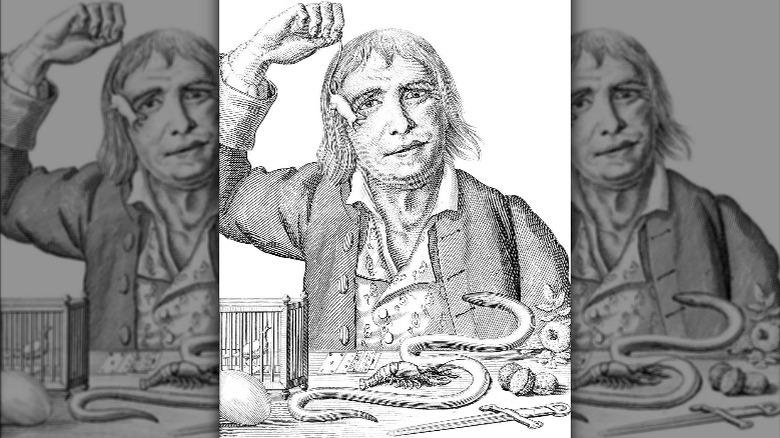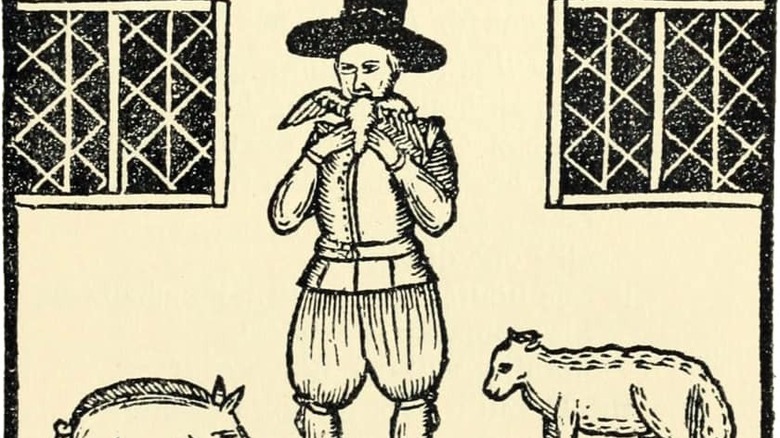Who Was Tarrare, The Man Who Could Eat Anything?
It's France in the 18th century. A crowd of people gathers together in a small, obscure village to watch as a traveling show sets up in the center of town. Much like the traveling circuses with their "freakshows," this motley crew of characters consists of what society would deem "outcasts," strangers that ranged from the grotesque to the shady. Yet one man stands out above them all. A skinny, somewhat shabby-looking man sitting down in front of the throng of villagers, a box clasped in his hands. As soon as the audience's attention is on him, the man opens the box and reveals a live chipmunk. Without saying another word, the man opens his mouth, places the chipmunk inside, and bites down. Among the gagging and screams of the audience, the man only licks his lips — and smiles.
While this may sound like the beginning of a horror story, it was actually a day in the long and fantastic life of a man known only as Tarrare. The Lineup describes this obscure character as a "cannibalistic French spy," while Ripley's Believe It or Not summarizes his life as a "sad, voraciously unquenchable existence." Some accounts of Tarrare's life describe him as a walking enigma who confounds medical science even to this day, while others paint him as a monster whose unsatiable appetite led him to commit horrific crimes. But who was this mysterious Frenchman, and what drove his nearly inhuman appetite?
Tarrare was a French soldier and attraction
While Tarrare is well known for his ability to eat most anything, his backstory is vague. Tarrare isn't even his real name, Quartz explains, as "tarrare" comes from a then-popular French saying to describe explosions. It is commonly agreed that the man who would become Tarrare was born in Lyon, France in 1772 and was abandoned by his family because they couldn't afford to sate his endless appetite.
Ohio State University tells us that Tarrare was "adopted" by a "traveling show" composed of prostitutes and thieves, who displayed Tarrare's ability to consume anything and everything to a shocked public. While working as a "sideshow attraction," Tarrare ate everything from literal buckets of apples to barrels of wine in one sitting and, to really thrill the public, a live animal every now and then. Later on, Tarrare enlisted in the French Army, where he would go on to become a soldier and a spy. Unlike his steadfast hunger, his performance wasn't particularly noteworthy, with one particular stunt involving Tarrare "swallowing" a message and then "passing" it out, nearly resulting in him being hung by Prussian forces.
Tarrare, desperate to find a cure for his endless hunger, was hospitalized following his time in the military. This stint in a Soutlz hospital, Mental Floss tells us, had Tarrare trying to sate his hunger in any way he could, from drinking the blood of other patients and supposedly devouring a 14-month-old child from a neighboring hospital room.
Tarrare's autopsy baffled medical science
When Tarrare, the legendary glutton, passed away from tuberculosis in 1798 (via All That's Interesting), doctors were eager to see just what made the man with an endless appetite tick. What they found, however, utterly baffled them: his autopsy describes "putrefied entrails," a pus-filled stomach so massive it filled his entire abdomen, a bloated liver and gallbladder, and a gullet so wide that doctors could see directly into Tarrare's rotting stomach if they looked into his mouth.
Although medical science in the 1700s may have been confused as to Tarrare's condition, could modern-day medical science hold the answer? Pica, which according to Cleveland Clinic, is a condition where "a person compulsively swallows non-food items," is similar to what Tarrare had. While this sheds light on Tarrare's extreme hunger, Tarrare also had several physical anomalies as well. Particular examples, Factinate reports, include immensely overpowering body odor, intense body heat, thin lips, and skin so loose the man could tie it up around his oddly skinny frame. Tarrare may have suffered from trimethylaminuria, a rare disease in which the body fails to change certain chemicals in the body (via Rare Disease), and dermatosparaxis Ehlers-Danlos syndrome, which results in loose, flabby skin (via NIH).
There have been no reports of any other cases like Tarrare's since his death in 1798. But then again, in a world of myths and competitive eaters, you never know who's out there.


